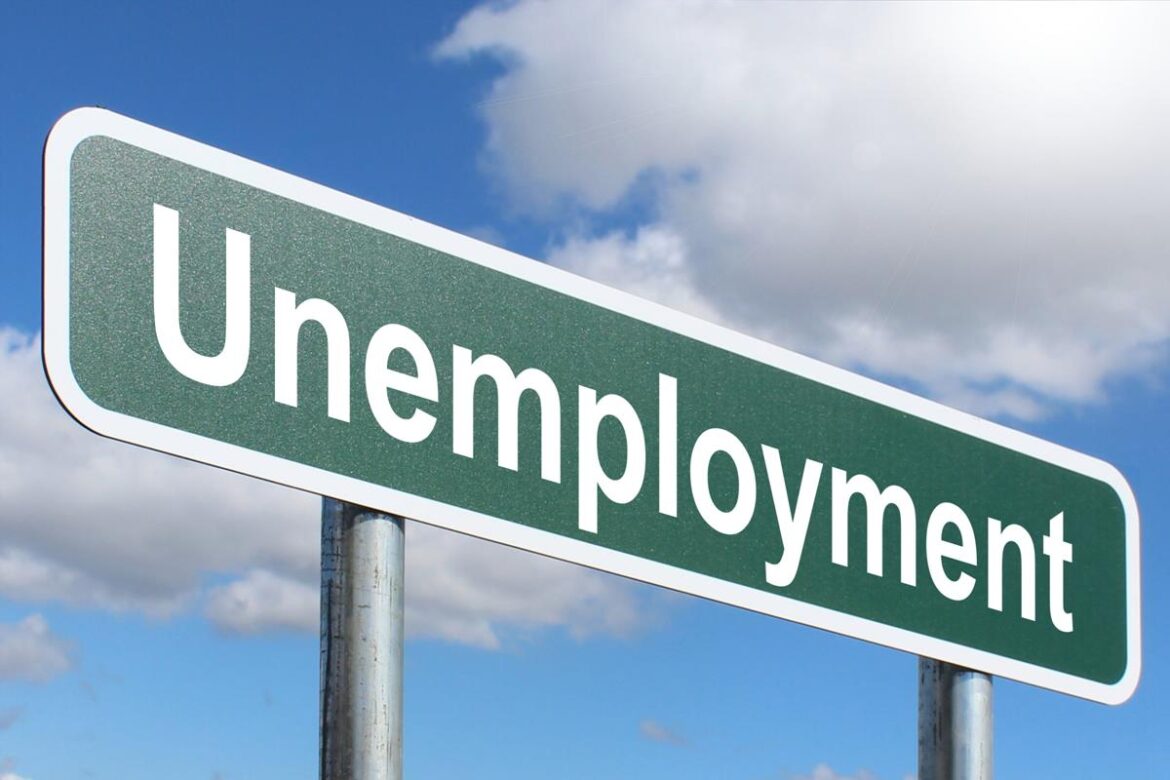Unemployment is a pressing issue that affects many people worldwide, including those living in the state of New York. The COVID-19 pandemic has caused significant disruptions to the economy, leading to a surge in unemployment claims in the state. If you are a resident of New York and have lost your job, it’s crucial to understand the unemployment benefits available to you, the eligibility requirements, and how to apply for them. This Eastcoastlaws.com article will provide you with everything you need to know about unemployment in New York, including the different types of benefits available, the application process, and tips for maximizing your benefits. Whether you’re a first-time applicant or have previously received unemployment benefits, this guide will provide you with valuable information to help you navigate the system and get the support you need during these challenging times.
Causes Of Unemployment In New York
Unemployment is a significant problem in New York, with an average unemployment rate of 6.5% in 2021. There are several reasons why unemployment persists in the state, including economic and structural factors. In this essay, we will discuss the main causes of unemployment in New York.
One of the main causes of unemployment in New York is the shifting economy. Over the past few decades, the state’s economy has been transitioning from a manufacturing and industrial base to a service-oriented economy. Many of the traditional manufacturing jobs that used to support the state’s working class have disappeared, leaving behind a workforce that lacks the skills needed to compete in today’s job market. The shift towards service-based jobs also means that many of the new jobs created in the state require specialized skills, which many unemployed individuals may not possess.
Another major factor contributing to unemployment in New York is the state’s high cost of living. Housing, healthcare, and education are all significantly more expensive in New York than in many other states, making it difficult for low-income individuals to make ends meet. The high cost of living also puts pressure on small businesses, which may struggle to compete with larger corporations that can afford to pay their employees more.
Additionally, immigration policies have played a role in unemployment in New York. While immigration has been a significant driver of the state’s economic growth, many immigrants may face challenges finding employment due to language barriers or a lack of education or job skills. Furthermore, federal immigration policies may restrict certain types of workers from entering the country, reducing the pool of available workers in certain industries.
Finally, the COVID-19 pandemic has had a significant impact on unemployment in New York. The pandemic caused widespread layoffs and business closures, particularly in the service sector, which has traditionally been a significant source of employment in the state. The pandemic also led to a significant decline in tourism, which is a vital industry in New York, leading to further job losses.
Unemployment is a significant problem in New York, with several factors contributing to the issue. These include a shifting economy, high cost of living, immigration policies, and the COVID-19 pandemic. Addressing these issues will require a multi-faceted approach that includes job training programs, increased access to affordable housing, healthcare, and education, and support for small businesses. Additionally, a focus on creating a more equitable and inclusive economy that provides opportunities for all New Yorkers is essential to reducing unemployment in the state.
Demographics Of Unemployment In New York
The demographics of unemployment in New York vary across different regions, industries, and communities. However, certain groups tend to experience higher rates of unemployment than others, including:
- Racial and ethnic minorities: Black and Hispanic individuals in New York are more likely to experience unemployment than their white counterparts. According to data from the New York State Department of Labor, the unemployment rate for Black New Yorkers was 10.2% in 2021, compared to 7.6% for Hispanics and 5.4% for whites.
- Youth: Young people between the ages of 16 and 24 are more likely to experience unemployment than older age groups. According to the Bureau of Labor Statistics, the unemployment rate for this age group in New York was 12.9% in 2021, compared to 6.0% for those aged 25 and older.
- Low-income individuals: People with lower levels of education and income are more likely to experience unemployment. In New York, individuals without a high school diploma had an unemployment rate of 9.3% in 2021, compared to 3.5% for those with a bachelor’s degree or higher.
- Women: Women have been disproportionately affected by the COVID-19 pandemic, which has led to significant job losses in industries such as hospitality and retail, where women are overrepresented. According to the National Women’s Law Center, women in New York lost a net of 343,000 jobs between February and December 2020.
- Immigrants: Immigrants, particularly those who are undocumented or have limited English proficiency, may face significant barriers to employment, including discrimination and lack of access to job training and education.
These demographics of unemployment highlight the need for targeted interventions and support to help these groups access employment opportunities and overcome barriers to employment. This can include targeted job training programs, outreach efforts to connect individuals with job openings, and policies that address systemic inequalities in the labor market.
Unemployment Rates In Different Regions Of New York
Unemployment rates in different regions of New York can vary based on a variety of factors, including industry composition, population density, and access to education and training. Here are some of the unemployment rates for different regions of New York as of January 2022, according to the New York State Department of Labor:
- New York City: 8.5% New York City has a large and diverse economy that includes industries such as finance, healthcare, and hospitality. However, the COVID-19 pandemic has had a significant impact on employment in the city, particularly in industries such as tourism and hospitality.
- Long Island: 5.3% Long Island has a diverse economy that includes industries such as healthcare, finance, and technology. The region also benefits from its proximity to New York City, which provides access to a large labor market.
- Hudson Valley: 5.1% The Hudson Valley is home to a variety of industries, including healthcare, education, and manufacturing. The region has a growing technology sector and is home to several colleges and universities.
- Capital Region: 4.2% The Capital Region has a diverse economy that includes government, healthcare, and technology. The region is home to several major universities and research institutions, which contribute to its strong technology sector.
- Central New York: 4.9% Central New York has a mix of industries, including healthcare, education, and manufacturing. The region is home to several universities and colleges and has a growing technology sector.
- Western New York: 5.5% Western New York has a diverse economy that includes healthcare, education, and manufacturing. The region has also invested in its technology sector in recent years.
These unemployment rates highlight the varied economic landscape of New York and the need for targeted interventions to address unemployment in different regions. For example, regions with a strong technology sector may benefit from job training programs that focus on developing skills in this field, while regions with a significant manufacturing sector may benefit from efforts to attract new businesses to the area.
Impact Of The COVID-19 Pandemic On Unemployment In New York
The COVID-19 pandemic has had a significant impact on unemployment in New York, with many businesses forced to close or reduce operations due to public health restrictions. According to the New York State Department of Labor, the statewide unemployment rate peaked at 15.9% in April 2020, up from 3.6% in February 2020, before gradually declining to 7.2% by December 2021. Here are some of the key impacts of the pandemic on unemployment in New York:
- Job losses in certain industries: Certain industries were hit particularly hard by the pandemic, including hospitality, tourism, and retail. According to the New York State Department of Labor, these industries accounted for the majority of job losses in the state during the pandemic.
- Disproportionate impact on low-wage workers: Low-wage workers, particularly those in service industries such as restaurants and retail, were disproportionately affected by the pandemic. Many of these workers were deemed essential but lacked adequate protections and benefits, putting them at greater risk of infection and job loss.
- Disruptions to education and childcare: The closure of schools and childcare centers had a significant impact on the labor force, particularly for women who were more likely to bear the burden of caregiving responsibilities.
- Unequal impact on communities of color: Communities of color were disproportionately affected by the pandemic, both in terms of health outcomes and economic impact. Black and Hispanic individuals in New York were more likely to experience job loss and financial hardship than their white counterparts.
- Shifts in remote work and digital transformation: The pandemic also accelerated trends towards remote work and digital transformation, which had both positive and negative impacts on employment. While remote work allowed some workers to continue their jobs and even expanded job opportunities, it also led to job losses in certain sectors and raised concerns about the digital divide and access to technology.
In response to the pandemic, the state and federal government implemented a range of programs to support workers and businesses, including expanded unemployment benefits, small business loans, and targeted support for hard-hit industries. However, the long-term impact of the pandemic on employment in New York remains to be seen.
Job Opportunities And Industries With Job Growth In New York
New York is a large and diverse state with a variety of job opportunities and industries. Here are some of the industries with job growth in New York as of 2022:
- Healthcare: Healthcare is one of the fastest-growing industries in New York, with strong demand for healthcare professionals such as nurses, doctors, and home health aides. This is due in part to an aging population and an increase in chronic health conditions.
- Technology: New York has a growing technology sector, particularly in New York City, which is home to many startups and established tech companies. Job opportunities in this sector include software development, data analysis, and cybersecurity.
- Education: The education sector in New York is also growing, with job opportunities in K-12 education, higher education, and tutoring services. The state is home to several prestigious universities and colleges, which provide employment opportunities for faculty and staff.
- Finance: New York City is a major financial center, with job opportunities in banking, investment management, and insurance. The state also has a growing fintech sector, which includes companies that use technology to provide financial services.
- Construction: The construction industry in New York is experiencing job growth, particularly in the areas of infrastructure development and commercial construction. The state has a number of major construction projects underway, including the redevelopment of LaGuardia Airport and the expansion of the Jacob K. Javits Convention Center.
- Renewable energy: New York has set ambitious goals for renewable energy development, which is driving job growth in the clean energy sector. Job opportunities in this field include solar and wind energy installation and maintenance, as well as research and development.
Unemployment Insurance And Benefits In New York
Unemployment insurance (UI) is a program that provides financial assistance to individuals who have lost their jobs through no fault of their own. In New York, the Unemployment Insurance program is administered by the New York State Department of Labor (NYSDOL).
To be eligible for UI benefits in New York, individuals must meet certain requirements, including having worked and earned enough wages in covered employment during a specific period, being able and available to work, and actively seeking work. The amount of UI benefits is based on the individual’s earnings during their base period, up to a maximum weekly benefit amount set by law.
In addition to regular UI benefits, New York also offers several additional benefits programs:
- Pandemic Unemployment Assistance (PUA): PUA provides unemployment benefits to individuals who are not eligible for regular UI benefits, such as self-employed individuals and gig workers, and have been impacted by the COVID-19 pandemic.
- Extended Benefits (EB): EB provides additional UI benefits to individuals who have exhausted their regular UI benefits and continue to be unemployed.
- Shared Work Program: The Shared Work Program allows employers to reduce employee work hours and supplement lost wages with partial UI benefits.
To apply for UI benefits in New York, individuals can file a claim online through the NYSDOL website or by phone. Once approved, benefits are typically paid weekly via direct deposit or debit card.
It’s important to note that UI benefits are subject to federal and state taxes, and recipients are required to report any earnings from part-time work or other sources while receiving benefits. Failure to comply with UI program requirements may result in the denial or reduction of benefits, or even penalties.
Overall, UI benefits in New York can provide a critical source of financial support for individuals who have lost their jobs. However, it’s important for individuals to understand the eligibility requirements and program rules to ensure they receive the full benefits they are entitled to.
Comparison Of New York’s Unemployment Rate To Other States Or The National Average.
According to the latest data available from the U.S. Bureau of Labor Statistics (BLS) as of February 2023, the seasonally adjusted unemployment rate for New York State is 3.9%, which is lower than the national average of 4.1%.
Here are the unemployment rates for some other states as of February 2023:
- California: 4.0%
- Florida: 3.3%
- Texas: 3.2%
- Illinois: 4.7%
- Pennsylvania: 4.1%
- Ohio: 4.1%
- New Jersey: 4.6%
- Massachusetts: 3.6%
- Virginia: 2.6%
It’s important to note that these rates can change on a monthly basis, and they also vary by region and industry. Therefore, it’s always a good idea to check the latest data for a more comprehensive and accurate comparison.
Unemployment Offices in New York State (NYS)
Where in New York is the nearest unemployment office located? In the list below, you may locate the neighborhood New York unemployment office. Every NYS unemployment office’s address, phone number, and fax number has been compiled by us.
You can acquire information from these offices about filing a New York unemployment claim, determining your eligibility for unemployment benefits, and learning the status of an already filed unemployment claim.
| City | Address | Phone | Fax |
|---|---|---|---|
| Albany County Unemployment Office | 175 Central Avenue, Albany, NY 12206 | (518) 462-7600 X162 | (518) 447-5967 |
| Allegany County Unemployment Office | 7 Wells Lane, Belmont, NY 14813 | (585) 268-9240 | (585) 268-5176 |
| Fulton County Unemployment Office | 199 South Main Street, Gloversville, NY 12078 | (518) 725-6473 | (518) 773-4209 |
| Bronx County Unemployment Office | 358 East 149th Street, Bronx, NY 10455 | (718) 960-7099 | – |
| Broome County Unemployment Office | 171 Front Street, Binghamton, NY 13905 | (607) 778-2136 | (607) 778-3011 |
| Cattaraugus County Unemployment Office | 175 North Union Street, Olean, NY 14760 | (716) 373-1880 | (716) 372-3564 |
| Cayuga County Unemployment Office | 199 Franklin Street, Auburn, NY 13021 | (315) 253-1590 | (315) 253-1135 |
| Franklin County Unemployment Office | 158 Finney Boulevard, Malone, NY 12953 | (518) 485755 | (518) 486663 |
| Chautauqua County Unemployment Office | 407 Central Avenue, Dunkirk, NY 14048 | (716) 366-9015 | (716) 366-0502 |
| Chemung County Unemployment Office | 318 Madsion Avenue, Elmira, NY 14901 | (607) 733-7131 | (607) 737-0890 |
| Chenango County Unemployment Office | 1 Ohara Drive, Norwich, NY 13815 | (607) 334-2201 X128 | (607) 334-6540 |
| Clinton County Unemployment Office | 194 US Oval, Plattsburgh, NY 12903 | (518) 561-0430 or (866) 967-5768 | (518) 569566 |
| Columbia County Unemployment Office | 4400 Route 23, Hudson, NY 12534 | (518) 828-4181 X5510 | (518) 822-2007 |
| Cortland County Unemployment Office | 99 Main Street, Cortland, NY 13045 | (607) 756-7585 | (607) 756-5531 |
| Delaware County Unemployment Office | 1 Gallant Avenue, Delhi, NY 13753 | (607) 746-7477 | (607) 746-7106 |
| Dutchess County Unemployment Office | 233 Main Street, Poughkeepsie, NY 12601 | (845) 473-9000 X143 | (845) 471-6942 |
| Herkimer County Unemployment Office | 320 N. Prospect Street, Herkimer, NY 13350 | (315) 867-1400 | – |
| Genesee County Unemployment Office | 587 East Main Street Suite 100 Eastown Plaza, Batavia, NY 14020 | (585) 344-2042 | (585) 344-3266 |
| Erie County Unemployment Office | 77 Goodell Street, Buffalo, NY 14203 | (716) 856-5627 | (716) 856-5670 |
| Essex County Unemployment Office | 103 Hand Avenue Suite 1, Elizabethtown, NY 12932 | (518) 873-2341 | (518) 873-2392 |
| Jefferson County Unemployment Office | 1000 Coffeen Street, Watertown, NY 13601 | (315) 782-9252 | (315) 782-2073 |
| Kings County Unemployment Office | 9 Bond Street, Brooklyn, NY 11201 | (718) 246-5219 | – |
| Lewis County Unemployment Office | 5274 Outer Stowe Street, Lowville, NY 13367 | (315) 376-5800 | (315) 376-5328 |
| Livingston County Unemployment Office | 6 Court Street Room 105Geneseo, NY 14454 | (585) 243-7047 | (585) 243-7598 |
| Madison County Unemployment Office | 1006 Oneida Plaza Drive, Oneida, NY 13421 | (315) 363-2400 | (315) 363-4545 |
| Monroe County Unemployment Office | 691 St. Paul Street, Rochester, NY 14605 | (585) 753-5656 | (585) 753-5606 |
| Montgomery County Unemployment Office | 2620 Riverfront Center, Amsterdam, NY 12010 | (518) 842-3676 X3037 | (518) 842-3802 |
| Nassau County Unemployment Office | Hempstead Executive Plaza 50 Clinton Street, Hempstead, NY 11550 | (516) 485-5000 | (516) 485-5009 |
| New York County Unemployment Office | 1 Hudson Square, 75 Varick Street, New York, NY 10013 | (212) 775-3771 | (212) 775-3853 |
| Niagara County Unemployment Office | 1001 11th Street, Niagara Falls, NY 14301 | (716) 278-8281 | (716) 278-8158 |
| Oneida County Unemployment Office | NY State Office Building – Suite 202207 Genesee St. 2nd Floor, Utica, NY 13501 | (315) 793-2229 | (315) 793-2509 |
| Onondaga County Unemployment Office | 443 North Franklin StreetLower Level, Syracuse, NY 13204 | (315) 473-8250 | (315) 477-6996 |
| Ontario County Unemployment Office | 70 Elizabeth Blackwell Street, Geneva, NY 14456 | (315) 789-1771 | (315) 782289 |
| Orange County Unemployment Office | 3 Washington Center 4th Floor, Newburgh, NY 12550 | (845) 568-5090 | (845) 568-5381 |
| Orleans County Unemployment Office | 458 West Avenue, Albion, NY 14411 | (585) 589-5335 | (585) 589-2715 |
| Oswego County Unemployment Office | 200 N. 2nd Street, Fulton, NY 13069 | (315) 591-9000 | (315) 599047 |
| Otsego County Unemployment Office | 12 Dietz Street Oneonta, NY 13820 | (607) 432-4800 X115 | (607) 432-8130 |
| Putnam County Unemployment Office | 110 Old Rte. 6, Carmel, NY 10512 | (845) 808-1651 | – |
| Queens County Unemployment Office | 168-25 Jamaica Avenue, 2nd Floor, Jamaica, NY 1143 | (718) 557-6755 | – |
| Rensselaer County Unemployment Office | 1600 7th Avenue, 4th Floor, Troy, NY 12180 | (518) 270-2860 | (518) 270-2876 |
| Richmond County Unemployment Office | 120 Stuyvesant Plaza 3rd Floor, Staten Island, NY 10301 | (718) 285-8404 | – |
| Rockland County Unemployment Office | 11 Perlman Drive, Spring Valley, NY 10977 | (845) 356-5100 | (845) 356-5949 |
| St Lawrence County Unemployment Office | 80 State Highway 310 Suite 8, Canton, NY 13617-1498 | (315) 386-3276 | (315) 386-3414 |
| Saratoga County Unemployment Office | 152 West High Street, Ballston Spa, NY 12020 | (518) 884-4170 | (518) 884-4262 |
| Schenectady County Unemployment Office | 797 Broadway, Schenectady, NY 12305 | (518) 344-2735 | (518) 382-5988 |
| Schoharie County Unemployment Office | 795 East Main Street Suite 4, Cobleskill, NY 12043 | (518) 234-4254 | (518) 234-4256 |
| Schuyler County Unemployment Office | 323 Owego Street, Montour Falls, NY 14865 | (607) 776-2125 | (607) 535-6845 |
| Seneca County Unemployment Office | 1 DiPronio Drive, Waterloo, NY 13165 | (315) 539-1905 | (315) 539-3857 |
| Steuben County Unemployment Office | 20 Denison Parkway West Suite 102, Corning, NY 14830 | (607) 937-8337 | (607) 937-3169 |
| Suffolk County Unemployment Office | 725 Veterans Memorial Highway, Hauppauge, NY 11788 | (631) 853-6600 | (631) 853-6510 |
| Sullivan County Unemployment Office | 50 North Street, Monticello, NY 12701 | (845) 794-3340 | (845) 796851 |
| Tioga County Unemployment Office | 1062 State Route 38, Owego, NY 13827 | (607) 687-8500 | (607) 687-7759 |
| Tompkins County Unemployment Office | 241171 East State Street, Ithaca, NY 14850 | (607) 272-7570 | (607) 272-2835 |
| Ulster County Unemployment Office | 601 Development Court Ulster Avenue, Kingston, NY 12401 | (845) 338-4696 | (845) 340-3165 |
| Warren County Unemployment Office | Northway Plaza, Queensbury, NY 12804 | (518) 743-0925 | (518) 743-0828 |
| Washington County Unemployment Office | 383 Broadway, Fort Edward, NY 12828 | (518) 746-2390 | (518) 746-2392 |
| Wayne County Unemployment Office | 1519 Nye RoadSuite 601, Lyons, NY 14489 | (315) 946-7270 | (315) 946-7271 |
| Westchester County Unemployment Office | 120 Bloomingdale Road, White Plains, NY 10605 | (914) 995-3910 | (914) 995-3958 |
| Wyoming County Unemployment Office | 448 North Main Street, Warsaw, NY 14569 | (585) 786-3145 | (585) 786-3074 |
| Yates County Unemployment Office | 417 Liberty Street Suite 2021, Penn Yan, NY 14527 | (315) 536-5140 | (315) 533456 |






